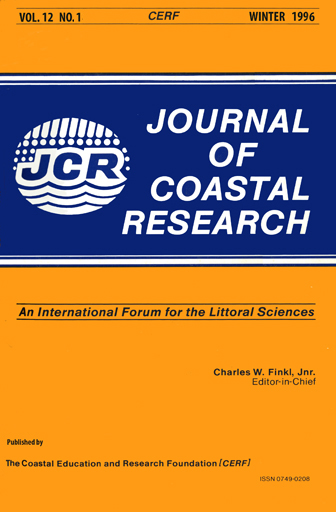An Integrated Study of Sediment Discharge from the Changjiang River, China, and the Delta Development Since the Mid-Holocene
Keywords:
Chenier Plain, shoreline accretion, deltaic basin, post-glacial sea-level rise, deltaic progradation, coastal floodplainAbstract
The accelerated growth of the Changjiang River delta since 2,000 BP was formerly attributed to the intensified human activity in the drainage basin. An integrated catchment-deltaic study shows that this rapid growth began at the time when the headward aggradation of the Changjiang river-bed since the last deglaciation had come to an end, which allowed the river to carry more sediments into the sea. Although the Changjiang drainage basin has experienced an unprecedented intensity of human activities in the past 40 years, the sediment discharge either from the upper basin or from the river mouth into the sea did not show any significant increase due to its small sediment delivery ratios. It is proposed that the anthropogenic modification has exerted a dual effect on the sediment discharge into the sea. However, it suggests that the ancient human activities were far from producing any significant difference in the sediment discharge between the two periods before and after 2,000 BP.
The development of the Chenier Plain from 6,400 to 3,500 BP was the result of coastal profile adjustment in response to sea-level rise since the postglacial period. Sedimentary evidence suggests that at this time the direct sediment inputs from the river into the shallow-water coast was considerably lower. A preliminary estimate shows that during this period about 46 to 92 million tons of sediments were annually deposited on the middle-lower river-bed and its flood-plains, approximately equivalent to 10% to 20% of the present Changjiang’s sediment discharge into the sea.
From 3,500 to 2,000 BP was a period of discontinuity of deltaic land progradation. This discontinuity occurred at the time when the process of coastal profile adjustment had largely been completed, whereas the longitudinal river-bed profile of the middle-lower Changjiang River had not yet adjusted to the sea-level. The sediment deficiency into the sea, as a result of the river-bed aggradation before 2,000 BP, may partly account for the land-forming discontinuity. Meanwhile, most of the sediment from the river mouth was trapped by the relatively deep-water sedimentary basin to build the underwater delta and a new coast profile, which paved the way for the rapid seaward growth of deltaic land after 2,000 BP.


